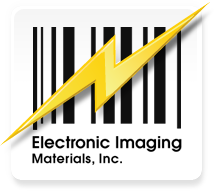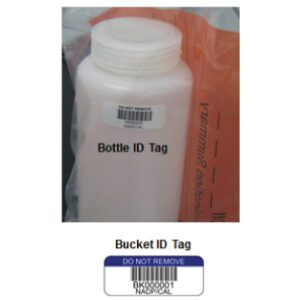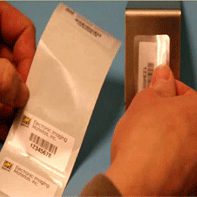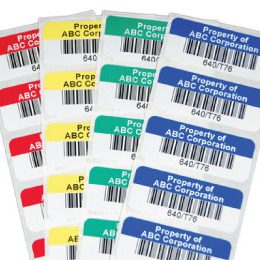In a laboratory, the smallest details can have a huge impact on overall performance. That’s why labels are important. Although simple, they can determine whether test results remain reliable, whether audits run smoothly, and whether a lab meets important quality standards.
Choosing the wrong type of label can cause confusion, extra expenses, or even regulatory trouble. On the other hand, choosing the right laboratory labels supports efficient operations, reduces errors, and keeps the lab running at its best. Learn how.

How Proper Labeling Leads To Success
Laboratories that align with proper regulator standards demonstrate a commitment to continual improvement, customer satisfaction, and consistent processes. For lab managers, meeting guidelines often means paying close attention to details like documentation and traceability. Laboratory labels are central to some common requirements: each sample, reagent, and piece of equipment must be clearly identified and tracked. High-quality labeling helps maintain data integrity, reduces the risk of mix-ups, and supports smooth operations across all workflows.
Why Correct Labeling Matters
Labels connect information to physical objects. In a laboratory, mislabeling a vial or slide can lead to incorrect conclusions, lost research time, or safety hazards. As such, it’s important to choose laboratory labels that suit the tasks at hand. Without proper planning, you might find yourself using a label that fades in cold storage, smudges when exposed to chemicals, or peels off in an autoclave. These issues can break the chain of custody for samples, create confusion, and waste valuable resources.
Common Types of Laboratory Labels
There’s no “one-size-fits-all” label. Different labs and applications call for different solutions. Understanding the range of laboratory labels available helps you pick the right tool for each job, ensuring that every container, instrument, or document is properly identified.
- Cryogenic Labels: These are used for storing samples at ultra-low temperatures such as in freezers, cryostats, or liquid nitrogen tanks. Cryogenic labels remain sticky and legible even when exposed to extreme cold. They’re slow to crack or peel, helping to maintain sample integrity.
- Chemical-Resistant Label: In areas where containers and equipment come into contact with harsh chemicals, solvents, or acid, these are ideal. Chemical-resistant labels hold up to aggressive substances, preventing fading or ink smudging. This ensures key data stays readable, supporting correct handling and analysis.
- Heat-Resistant Labels: These are best for items that must withstand high-temperature processes like autoclaving or sterilization. This type of label maintains its adhesive strength and print quality under intense heat, so labeled flasks, glassware, and instruments emerge from high-temp procedures still clearly identified.
- Tamper-Evident Labels: Use these for sensitive materials that require security, such as controlled substances, valuable samples, or proprietary reagents. Tamper-evident labels show clear signs if someone tries to remove or alter them. This protects the integrity of samples and supports accountability and compliance.
- General-Purpose Labels: For routine tasks involving standard lab conditions—room temperature, minimal moisture, and little to no chemical exposure. General-purpose labels are cost-effective and versatile, suitable for everyday tasks like labeling storage boxes, shelves, and less sensitive items.

Kuda M. | Zvitambo
“Been a customer for years and happy with product and service and therefore no real reason to switch or use another product or service provider. Also good to have consistency in product quality..cryolabels and ribbon.“
Matching Labels to Surfaces and Conditions
Not every surface is the same, and not every condition is ideal. Choosing the right laboratory labels involves more than just picking a type. You must also consider the materials you’re labeling and the conditions they face:
- Vials and Tubes are often subjected to freezing, thawing, or contact with chemicals. Cryogenic or chemical-resistant labels help maintain readability through temperature shifts and solvent exposure.
- Microscope Slides: Thin and delicate, these must remain clear. For slides that undergo staining or solvent treatment, chemical-resistant labels ensure the sample’s identity remains intact without obscuring the viewing area.
- Microplates and Petri Dishes: Exposed to warm incubators, moisture, or chemical treatments, these items might benefit from either heat-resistant labels or chemical-resistant labels, depending on the process.
- Equipment and Instruments: Tools that undergo autoclaving or cleaning with harsh solvents need heat-resistant labels or chemical-resistant labels to ensure that IDs don’t vanish after sterilization cycles.
By considering the conditions each item faces, you can ensure that labels remain intact and legible. This approach prevents costly mix-ups, rework, or downtime caused by unclear markings.
Are your labels not sticking? Surface contamination is one of the key reasons why barcode labels fail to cooperate. Explore more common culprits and learn how to avoid them.
How to Avoid Common Mistakes and Costly Errors
Selecting the wrong label can cause multiple problems. Here are a few pitfalls to avoid:
Pitfall #1. Using Incompatible Labels
Placing a standard label in a cryogenic environment will cause it to peel off, losing critical information. Similarly, using a label not designed for chemical contact can lead to faded text, making it tough to identify the contents.
Pitfall #2. Cutting Costs on Quality
While buying cheaper labels might seem smart, low-quality options often fail under challenging conditions. Constantly replacing labels, re-identifying samples, and risking lost data can cost far more in the long run.
Pitfall #3. Skipping Staff Training
Even the best labels need proper handling. Without basic instructions, staff might apply labels incorrectly or store items in conditions that reduce label life. A small training session can prevent big issues down the line.
Pitfall #4. Ignoring Feedback
If staff frequently complain about labels peeling or fading, it’s a clue that changes need to be made. Listening to feedback and being willing to try better options leads to continual improvement.
By paying attention to these details, labs can avoid operational hiccups and maintain a well-ordered environment that supports their quality goals.
Strategies for Choosing the Right Labels
Finding the perfect laboratory labels does not happen by chance. It requires thought, testing, and sometimes expert guidance.
1. Assess Your Environment: Start by noting the conditions items face: temperature ranges, chemical exposure, moisture, or sterilization processes. This step narrows down which label types are suitable.
2. Prioritize Quality and Compliance: Quality labels designed for lab use may cost more upfront but save money and trouble in the long run. Such choices help maintain standards by ensuring that each item is properly identified.
3. Ask for Samples and Test Them: Requesting samples from a trusted labeling provider and testing them in real lab conditions is a smart move. See how labels hold up after a freeze-thaw cycle or chemical exposure. Confirm they remain secure and legible.
4. Consider Custom Solutions: Some labs have unique needs. Custom label solutions can address unusual conditions, special adhesives, or unique shapes. A knowledgeable supplier can tailor labels to specific requirements, ensuring a perfect fit.
The Bottom Line
In a world of strict standards, complex workflows, and ever-evolving research goals, investing in the right laboratory labels sets your lab on the path to success. By understanding label types, testing their performance, and working with experienced suppliers, you position your lab to operate smoothly, reduce errors, and meet quality goals.
The result? A laboratory where information is always clear, samples remain properly identified, and every step follows a structured, compliant approach. With the right labels in place, your lab can focus on innovation, trust that data is accurate, and confidently move forward.
Elevate Your Lab With the Right Labeling Solutions
Don’t settle for labels that fall short of your lab’s quality standards. Contact Electronic Imaging Materials for expert guidance, customized laboratory labels, and a free sample.





